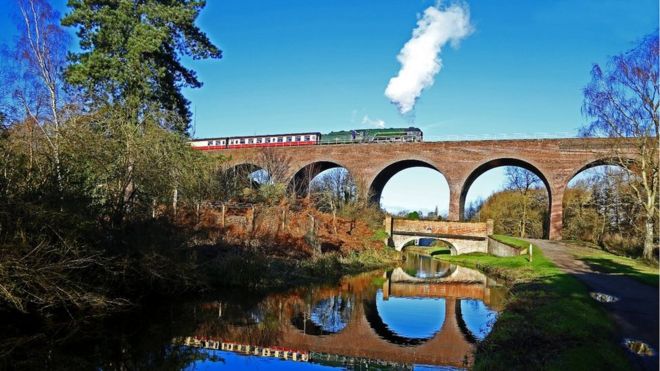GWR 0-6-0 pannier tank 7714 on the Severn Valley Railway at Kidderminster
The engine on duty to pull our train was 7714. It looked smart in its British Railways black livery, but I was particularly struck by the shiny brass plate on its frame. The plate indicated that the loco was built in 1930 by Kerr, Stuart & Co Ltd., of Stoke-on-Trent. This rang bells with me since I knew that Tom Rolt had been apprentice at Kerr Stuart and his uncle Kyrle Willans was chief development engineer. Willans was at that time also the owner of Cressy the boat Rolt was later to own and make famous in his book Narrow Boat.
Makers plate
The next stage was to check the chronology to see if 7714 was being built when Rolt was working for Kerr Stuart. A quick check of Rolt's autobiography Landscape with Machines revealed that he was indeed working at the Stoke factory in 1930. Rolt reports that "twenty-five new six-coupled pannier tanks were being built for the Great Western Railway" and points out that the paint shop were not happy with the specification in the contract set by GWR and that it caused "head-shaking".
So there we have it - a preserved locomotive built in the Kerr Stuart factory (California Works) whilst Tom Rolt was serving his apprenticeship. I am sure given Rolt's connections with both railway preservation and canals, he would have been pleased.
GWR 2-8-0 locomotive 2857 crossing the Victoria Bridge over the River Severn near Arley
(courtesy Mike Corbett)
What a shame the River Severn is not navigable up this way. However, it is still possible to navigate under the Severn Valley Railway on the Staffs & Worcestershire Canal near Kidderminster where the railway crosses via the Falling Sands viaduct.

Falling Sands Viaduct
(courtesy Severn Valley Railway)
